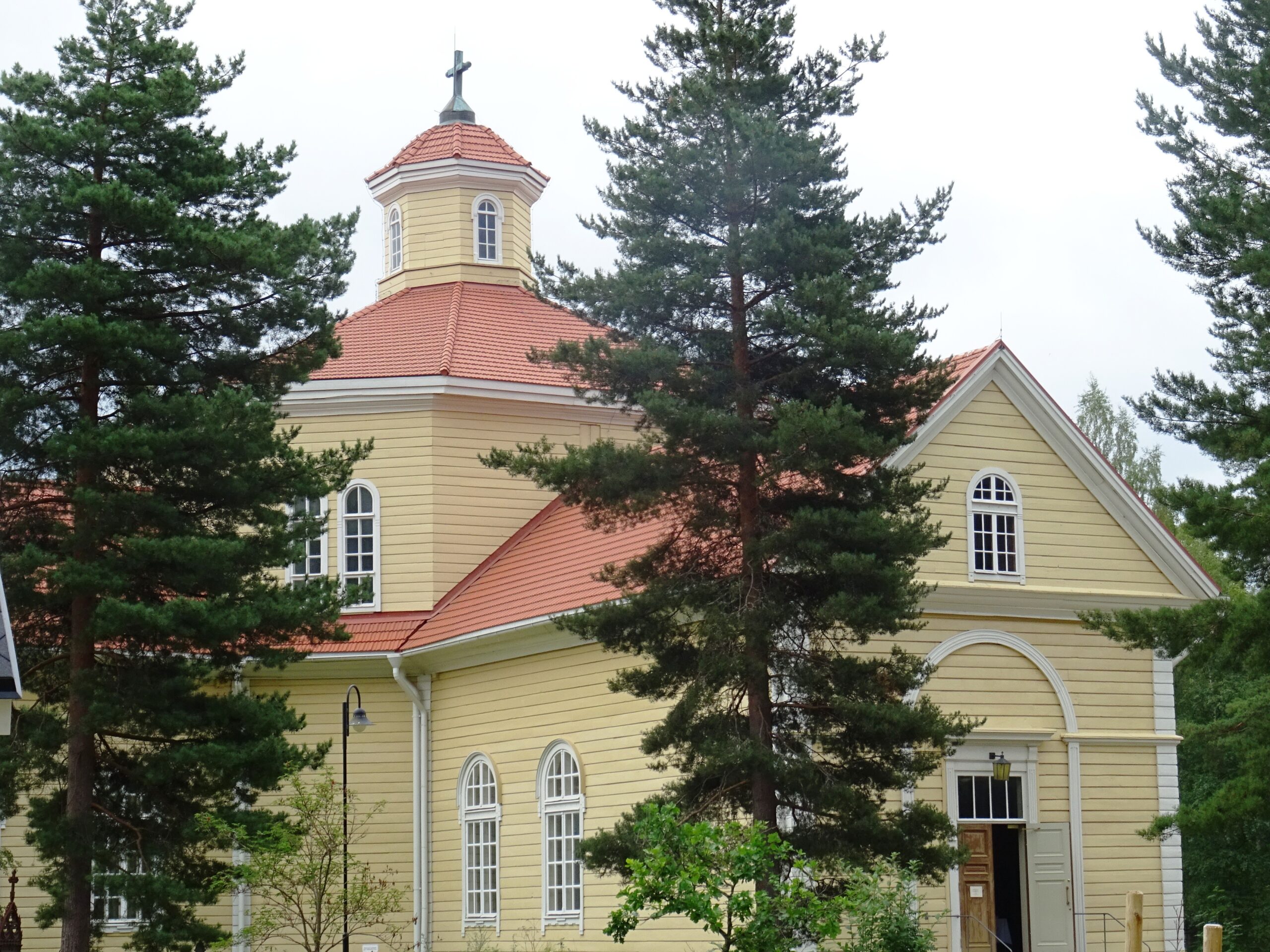
The Parish of LUOPIOINEN and the Chapel
History:
The first note of Luopioinen is from the year 1434.
In those days and till the end of the 1860s Luopioinen was part of the parish of Hauho.
Today it is incorporated into the parish and municipality of Pälkäne.
Events in parochial administration
The parish of Hauho and the parish of Pälkäne belong to old medieval parishes in this province. Hauho was first mentioned in records in 1329 and the history of Pälkäne starts with a note from the year 1403.
Luopioinen, which belonged to Hauho as a remote area, was administered from Hauho until the chaplains of Tuulos and Hauho took on an assistant pastor to serve in Luopioinen. The name of the assistant was Anders Kuohiander (born in the village of Kuohijoki), later he used the name Cojander. He was granted the status of chaplain in the 1690s. A. Cojander worked for the chapel for many decades. He died in 1739.
In 1880 Luopioinen was prescribed to be separated from Hauho. The decision was not to take effect until the chaplain in office, who was called Willberg, resigned his post.
Wilhelm Peronius took office as the first minister of independent Luopioinen in 1921. He was succeeded by Toivo Miettinen, Aaro Hurskainen, Eero Pitkäranta, Asko Karttunen and Olli Kaskelma.
In 2007 when the municipalities of Pälkäne and Luopioinen were united, the parishes were also merged with the consequence that the post of minister in Luopioinen became a chaplain´s office again.
The chaplain Janne Vesto holds his office since November 1, 2008. Work in the chapel is quite autonomous, especially when it comes to church service and social work. Plans are made and carried out jointly by the chaplain and a council elected by parish members. General administration and finances are common affairs with the mother parish as is mission and work for children and young people. Jari Kemppainen is Minister of Pälkäne with Luopioinen.
WORSHIP IN LUOPIOINEN
Initially services in the chapel of Hauho were held in a preacher´s cabin in the village of Padankoski. With Anders Kuohiander, the pastor, who moved in at the Nukari estate in the village of Haltia, worshipping became possible in Luopioinen. He officiated in the house of the Isoperhe family, which got a real church bell in 1695. It was ceremoniously dedicated to use on a Sunday in July called “kirkastuspyhä” at the end of the 17th century. That church feast day is still an important feature in the local tradition.
To serve the growing number of inhabitants in Luopioinen a new church was built by the year 1735 and it was consecrated on All Saints´ Day. Unfortunately it was destroyed by an arsonist in 1806.
The picture shows the Luopioinen “All Saints Church 1745-1806”,
which Pertti Toivari drew based on the information she collected and
the construction methods of the time.
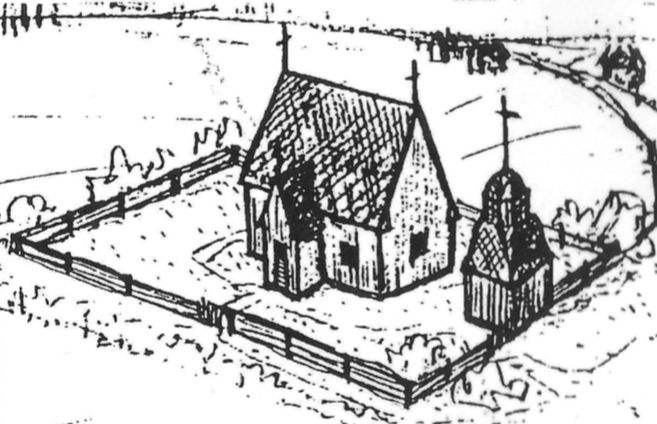
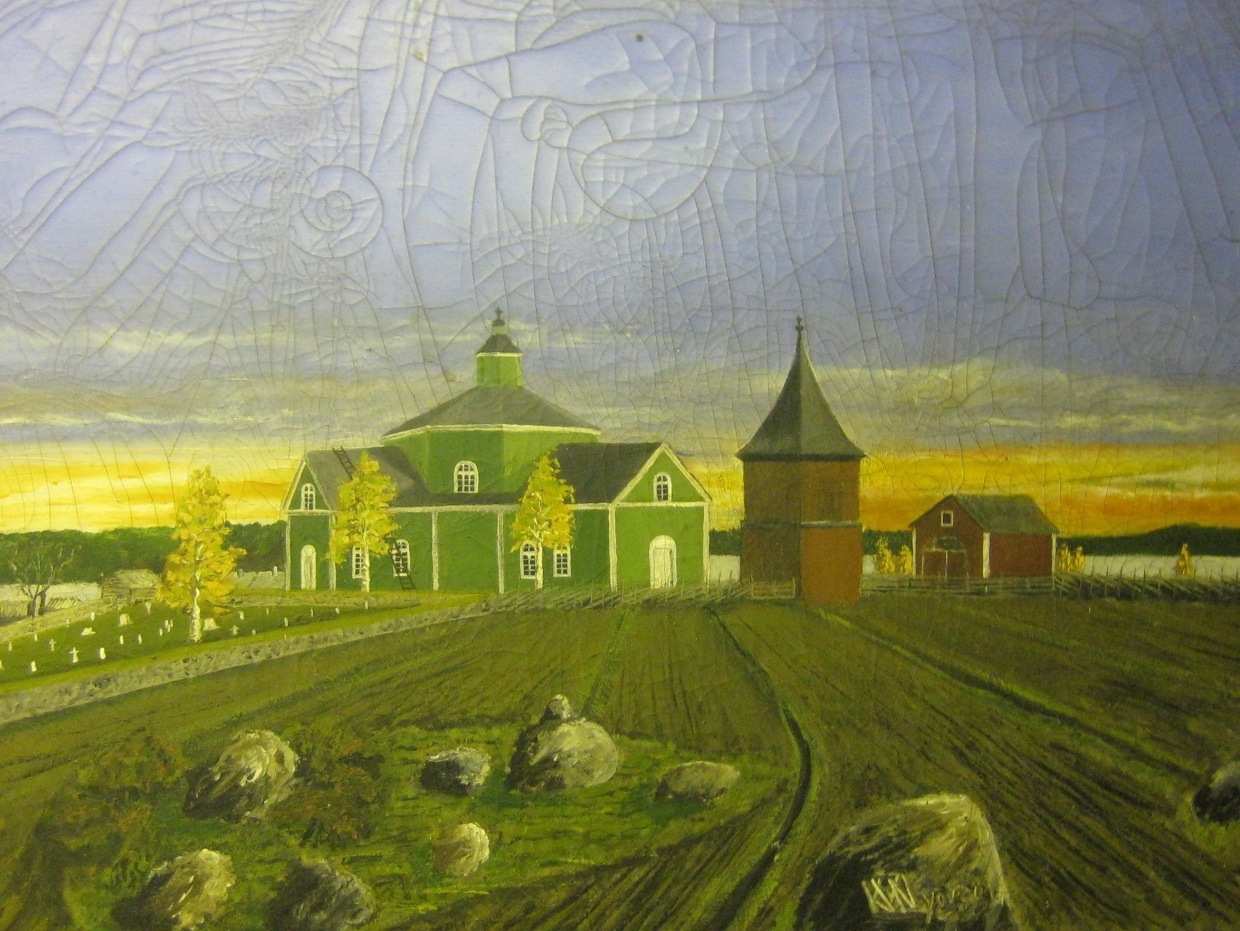
Ivar Wallenius, Minister in Hauho, contributed to the fact that the present church was erected although it was not easy due to the war between the years 1808 and 1809. The church was consecrated on the First Advent in 1813.
The church builder who lead the work was called Matti Åkergren and he was from Ruovesi. The church seats about 800 persons.
The building has been repaired and repainted in the years 1846, 1899, 1939 and 1959. The colour was red in 1831, some decades later it was green and then white. At the end of the 1960s the church was painted yellow.
The latest reparation of the interior was done in the years 1999 and 2000. The exterior was painted again and the roof was repaired by September 2009.
The graveyard round the church which has been used for burials from the 1780s has an old part which was provided with a stone fence at the beginning of the 19th century.
INSIDE THE CHURCH
The altarpiece in two parts represents the Last Supper and Christ hanging on the cross. These paintings were ordered for the church by the parish council in Luopioinen in 1844.
The painted curtains on the two sides of the altarpiece are common details in churches from the 19th century. They represent the Temple Curtain that was ripped in two at the moment when Jesus drew his last breath. They were painted by Hans Robert Grönlund in the 1840s.
The pulpit is decorate with the emblems of the four Evangelists, the angel symbolizing St Matthew, the lion St Mark, the ox St Luke the eagle St John.
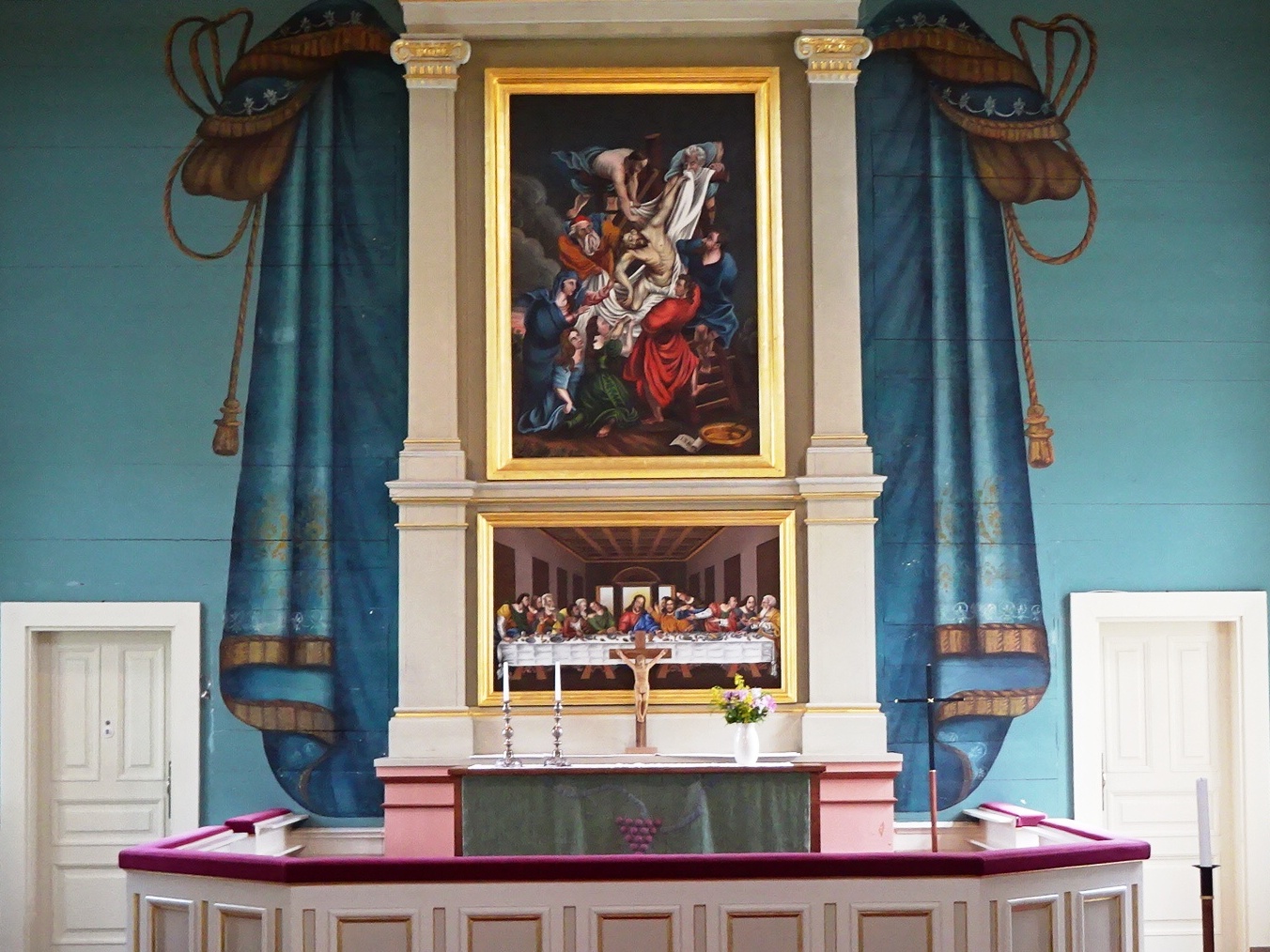
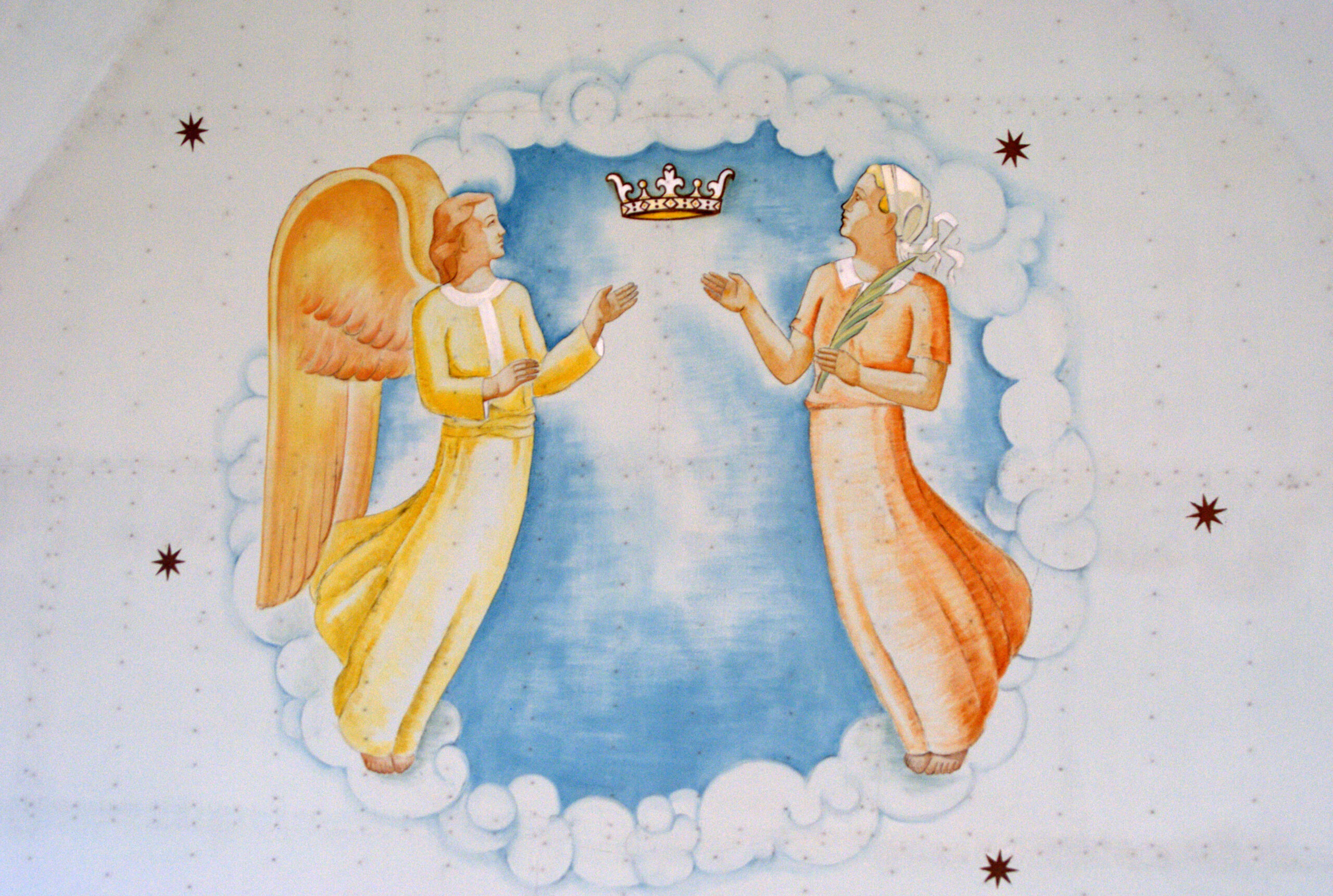
Antti Salmenlinna painted the angels on the ceiling and the quotations from the Bible on the beams in 1939.
The balustrades of the galleries are furnished with pictures of the 12 Apostles.
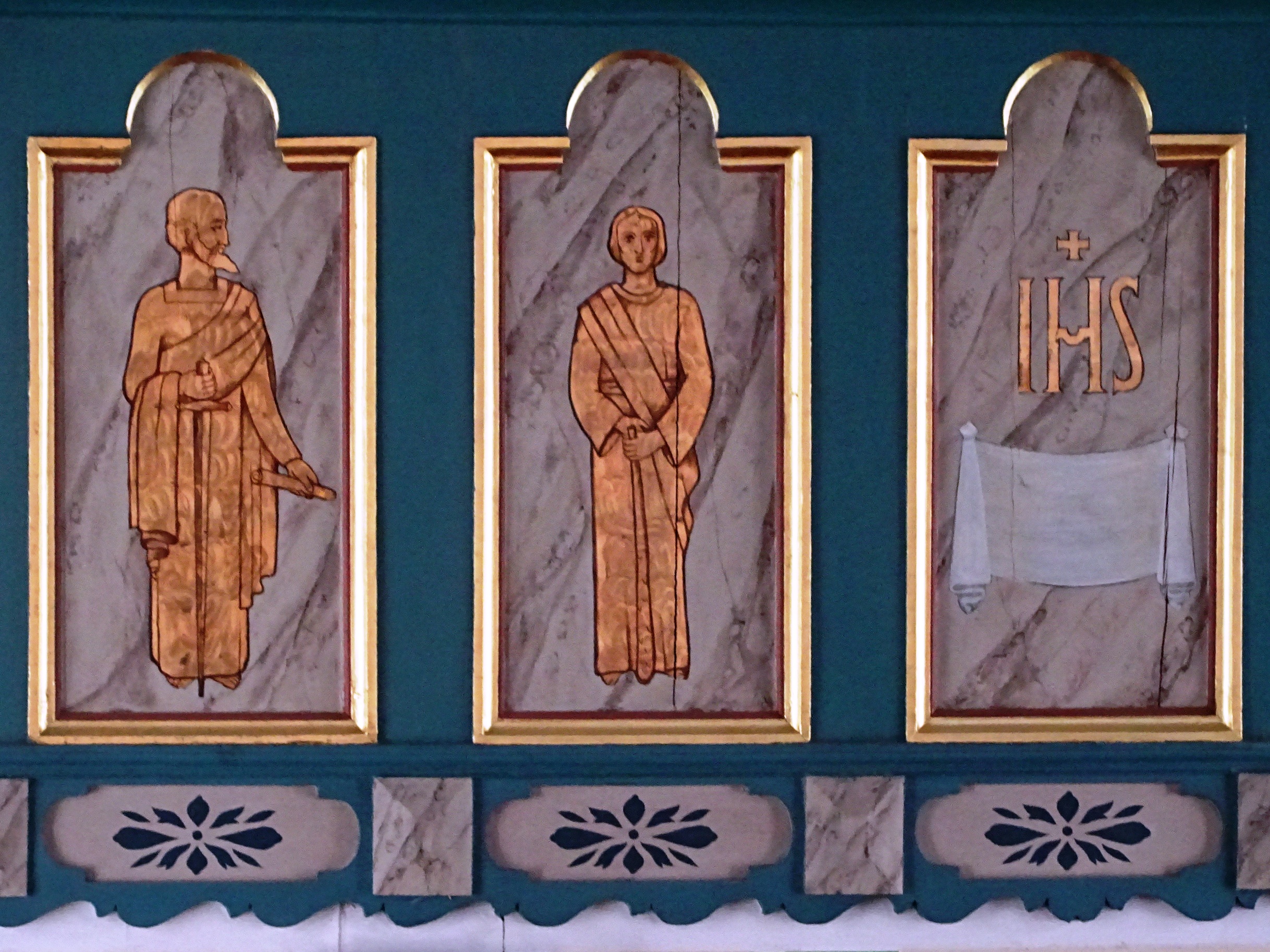
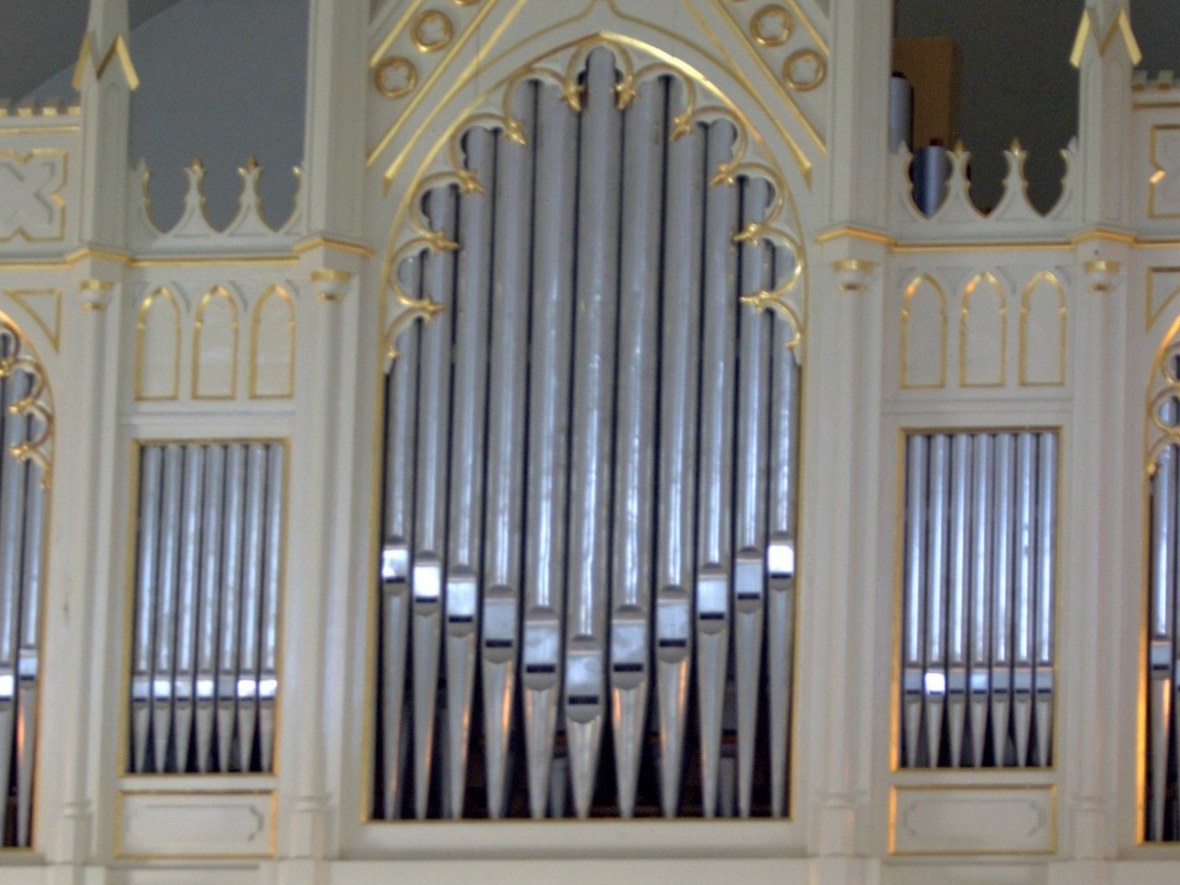
The organ was built by B.A.Thule of Kangasala.
It has a mechanized milling, 15 registers and two manuals.
It was repaired in 1956. In 2004 the organ was restored by Porthan so that it looks and sounds the same as it did when it was new.
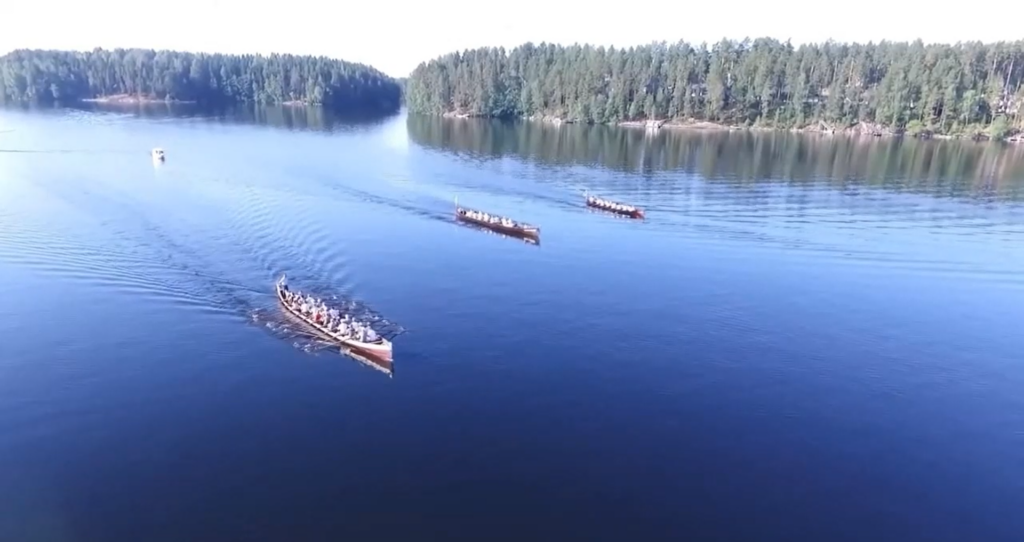
You can also see a musicvideo about this chuch and
the old Churcboats arriving via YouTube:
https://youtu.be/alixLVTprvs
Text: Chaplain Janne Vesto.
Translation: Marjatta Aakkula.


